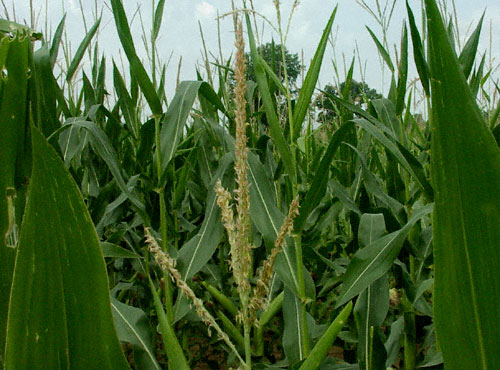Corn
Home | History | Uses | References
Overview
Good soil structure is important in allowing crop plants to yield well, and in helping resist erosion caused by the action of rainfall, melting snow in early spring, and wind.
Corn has strengths and weaknesses as a "soil building crop."
The strengths include the high photosynthetic rate and high dry matter yields produced by corn plants. More organic matter is returned annually to the soil with corn than with any other Canadian farm crop.
The large amount of soil tillage traditionally associated with seed-bed preparation and weed control meant high rates of soil organic matter oxidation (breakdown). However, as discussed in an earlier section, newer conservation tillage methods have reduced this loss, resulting in soil organic matter build-up with corn production.
Corn provides good "canopy" protection of soil surface during midsummer months, thereby reducing the potential for erosion caused by rainfall.


A negative with corn, however, is the relative slow rate at which ground cover is established in springtime, compared to crops such as perennial forages and winter cereals. This "flaw" can be countered, in large part, by the use of conservation tillage methods which leave the residues of previous crops on the soil surface for over-winter and early-spring protection.
High levels of soil erosion can also result in the loss of nutrients attached to soil particles. This is especially important for phosphate which has been a water pollutant in the Great Lakes. The control of soil erosion and the use of soil tests which ensure that excessive phosphate fertilizer is not applied are means of reducing water contamination by phosphates.
One weakness with corn as a soil building crop involves the fact that its roots are coarse and deeply penetrating. While this helps to improve the structure of deeper soil layers, it is less effective in stabilizing surface soil than are the fine, shallow roots of crops such as perennial grass species and winter cereals.
In practice, corn is now almost always grown in a crop rotation. Rotations with soybeans, winter wheat, spring-seeded small grain cereals, and/or perennial forages are most common. Each species has its own unique strengths and weaknesses as a soil-building crop, and the different rotational crop species tend to complement each other.
_________

 ___________
___________